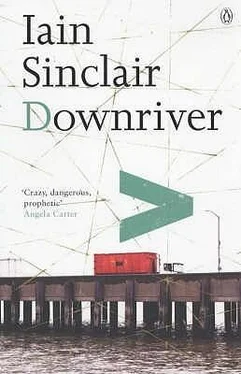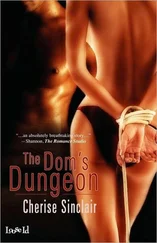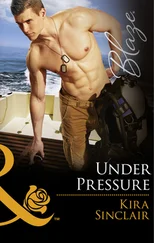We were swiftly assigned to the care of a certain Father Healy, an insignificant other, a vertical worm. Contempt poured from him. He sweated his distaste: a heady mixture of onion soup, eau de Cologne, and Sweet Afton cigarettes. (Could this be one of the Galway Healys? The traditional collectors of customs? A relative of Nora Barnacle?) He slid us from trophy to trophy, in the company of a gang of handrubbing frotteurs ; spoiled priests, rotten with sanctity. Healy gestured, with supreme arrogance, at the dazzling concourse of Popes hanging on the walls: ‘Innocent X’ by Velázquez, ‘Julius II’ by Raphael: even Francis Bacon, it appeared, was now an acceptable investment. All fakes, of course, more lustrous than the originals.
The shrine at the heart of the Papal Palace was kosher. The great black ecclesiastical fortress had been constructed around the ruins of the medieval hermitage and chapel of St Mary, lost for so many years to the citizens of the Island. It was shrouded in a climbing frame of girders; wafers of cladding that suggested Nicholas Hawksmoor’s white fossil-filled blocks of Portland stone. The simplicity of the shrine was overlaid by mandalic diagrams, defended against all known heresies. The vaulted ceiling came alive (at a signal from Healy) in a stunning fresco of light, a laser-constructed version of Michelangelo’s Sistine masterpiece. Only the ‘Creation of Woman’ was missing, expurgated and cast into outer darkness on the advice of a committee of responsible aesthetes, recently ‘let go’ by our Museums of State. Even the spoiled priests hushed their chattering, the programmed responses, as Father Healy — with a tremendous salute — flung his arm aloft, to release, in an ascending cloud, the soapy odours of excessive self-mortification. The Sistine vision bent around the available wall space in convincing deceit: all the iron-pumped carnival of gesture and counter-gesture; expulsion, ecstasy, pride. A Cinecittà pleasure-beach supervised by Vittorio Cottafavi; complete with time-cracked varnish, correctly insinuating the final vulnerability of flesh.
‘Gentlemen, Brothers in Christ,’ intoned Fr Healy in a lucid gargle, ‘you have before you the cinema of the gods, ab avo usque ad mala . Its upkeep is no trivial matter. Your cheques will therefore be gratefully received; earning you respect among your peers, and probable remission in Purgatory.’
The lard-faced penitents scrummaged forward to drop their folded promises, their plastic tickets, into Fr Healy’s open briefcase. They froze momentarily in the act, like politicians casting a public vote for the benefit of the newsreel cameras. The Celtic Father blessed them with a limp wave. They filed out, heads down, ignoring the triumphant murals (for which there might well have been an additional cover charge). It was left to the three pagans, the fifth columnists from the Bow Bunker, to acknowledge the magnificent walls of this chamber. We made our private choices between ‘The Miraculous Expulsion of Heliodorus from the Temple’, ‘Attila Repulsed from Rome by Leo I’, and ‘The Symbolic Marriage of John Paul II with the Church of Poland’, consummated before a backdrop of the Gdansk shipyards.
We stood silent, hands knotted together over the organs of generation, while Fr Healy gloatingly evaluated the pillaged treasures. He clucked. His Clara Bow lips pouted, as if closing around the nipple of a peculiarly sharp lemon. They were discreetly glossed. His malachite-green cheeks had received the faintest blush of powder.
It was time for us to enter the Sala Rotonda for the conference on Cosmology. We assimilated our final instructions with impatience. We were asked to maintain a dignified and responsible silence, and to remember, always, where we were.
‘Our mode of discipline anticipates the performance of the crime, and requires no vulgar enforcement. Suaviter in modo, fortiter in re ,’ Fr Healy warned with a smirk. ‘Do not forget for one moment this is not only a place of worship but also the home of the Holy Father, the lineal descendent of St Peter. He, in his infinite wisdom, has invited you here for a purpose; a purpose not to be revealed to his handservant. He has pronounced, ex cathedra : it is so. His will be done. Execution is tautologous.’
Allergic to cant, Davy sneezed. A tiny goaf of sputum elapsed down the halva-textured marble: a sea-green snail. Suspending all disbelief, it crawled — under Imar’s benevolent patronage — towards the exit. The portent was not difficult to interpret.
VI
Professor Hawking leant forward in his customized wheelchair, tieless, large-eared, a fruit bat quivering with intelligence, smiling the huge smile of the enthusiast, absolutely at one with his discourse. He was flanked by MIT-certified gophers, Mormon types, corn-fed hulks in sleeveless shirts who operated the Japanese speak-your-weight voicebox: an unborn mid-Atlantic bass interpreting some dim shade of the great man’s argument, dipping the diamond clarity of his equations in bursts of silicon language. The machine spat Hawking’s wild truths into the lap of the hogs. The physicist’s speculative leaps were calmed by the necessary hesitation between authorial grunts and filtered translation. It all sounded so perfectly reasonable. ‘Space-time has no beginning, no end. There was no moment of Creation. The boundary condition of the universe is that it has no boundary.’ The Jesuit fathers, wordly and toxic, nodded in unison: dangerous, inherited smiles. They were already rehearsing the destructive brilliance of their inquisition. Their scalps shone, shelfed pebbles of bone. They were eager to audition before this captive audience of television producers. Always room for another housebroken ‘talking head’ from across the Irish Sea.
From our insignificant position in a cage at the rear of the hall (with representatives of technical journals and footnote puffers from giveaway property sheets), we edged towards the door. We had done our homework and clocked the glass-fronted elevators, with their ornate jackal-embellished thrones (presumably designated to facilitate a quickfire Papal Audience, in transit to the skies). The elevator was our only route to the secret seminar in the heavenly pyramid. The wide Carrara staircase was nothing but decoration, an inflated metaphor for ‘time made subservient to form’. It was guarded by a regiment of Palatines, who increased in stature at each turn, thereby fostering an illusory and disturbing perspective. Each step was as sterile and polished as a cutting bench. The supreme tribunal, the segnatura , was elsewhere.
We were unchallenged. The long corridors were deserted. The guards were statues. Distortions of Hawking’s speech blared from disguised speakers. ‘Imag mag mag inary time is sss real ti ti time.’ We watched our own ghosts hesitantly approaching the doors of the lift. Our shallow breath left no trace on the glass. Imar pressed the button. Nothing happened. We waited anxiously: Davy fingering the embossed symbol of Vat City, the silver and gold crossed keys.
As he touched the key, the heavy doors slid open with a surprised hiss. ‘Everything in this building is contrary,’ he muttered. ‘The key should always be the symbol of a closed system. That’s what I discovered about Princelet Street. The synagogue was open to all. Every man who used the place had his own key. And so the ancient rusted thing in Rodinsky’s drawer was not the clue to some hermetic secret, but a badge of conformity. His membership of the shul . He belonged. The key hung on a string around his neck. The string rotted away, its flax devoured by rodents; the key survives within its oxidized shadow. Its continued presence in the drawer grants Rodinsky a family and a living place.’
Читать дальше












